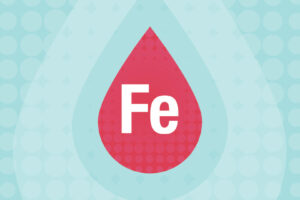There’s good news for the more than 54 million Americans diagnosed with some form of arthritis: a new class of medications is providing quick, safe relief from pain and swelling.
Types of Arthritis
There are more than 100 types of arthritic conditions. Symptoms include inflammation and swelling of the joints, which causes pain, discomfort, and movement issues. One of the biggest misconceptions about arthritis is that it only affects seniors, but two-thirds of arthritis patients are younger than 65 years of age. It can even affect children.
There are two types of arthritis:
- Inflammatory arthritis typically affects younger patients. It occurs when the body’s immune system attacks the cells in the joints, which in turn causes severe joint pain, stiffness, and swelling. Some of the inflammatory arthritic conditions include rheumatoid arthritis, arthritis related to psoriasis, Crohn’s disease, ulcerative colitis, lupus, or other conditions.
- Non-inflammatory arthritis primarily affects older patients. The most common type is osteoarthritis, a degenerative joint disease that can develop as we age and the cartilage within our joints begins to break down. Cartilage is the tissue that covers the ends of bones in a joint, and it allows bones to glide over one another and acts as a “shock absorber.” A healthy knee joint also contains a small amount of synovial fluid, a thick, gel-like substance that cushions the joint and provides lubrication to reduce friction. As we age, this lubrication decreases.
Treating Inflammatory Arthritis
For inflammatory arthritis, treatment is focused on stopping the immune system from attacking the joints. Because each person’s body responds to treatment differently, we use two classes of medications: Disease Modifying Anti Rheumatic Drugs (DMARD) and biologic agents. An example of DMARD is methotrexate.
- Methotrexate was introduced as a treatment for rheumatoid arthritis about 30 years ago and replaced high-dose aspirin and non-steroidal anti-inflammatory drugs (NSAIDS) as the treatment of choice. Instead of masking pain, methotrexate gets to the root of the issue to control the source of inflammation. It treats severe psoriasis by slowing the growth of skin cells to stop scales from forming and treats rheumatoid arthritis by decreasing the activity of the immune system.
- A new field of medications called biologics has revolutionized how we treat arthritis. Before, people with rheumatoid arthritis that didn’t respond to other treatments could become disabled and wheelchair-bound. Now, within a day or two of receiving a biologic agent, patients are feeling remarkably less pain and better mobility, with limited side effects. Depending on the medication – and there are more than 10 biologic medication options – it can be given as an injection, a pill, or an intravenous infusion. Biologics are particularly helpful for patients with rheumatoid arthritis, psoriatic arthritis, and spondylitis. Some examples of biologic medications include Enbrel, Humira, Orencia, Remicade, and Xeljanz.
Treating Non-Inflammatory Arthritis
For patients with non-inflammatory arthritis like osteoarthritis, the prevailing treatment had been aspirin until non-steroidal anti-inflammatory drugs (NSAIDS) were developed 50 years ago. This class of medications includes Motrin, Advil, naproxen, and ibuprofen.
Local joint injections like cortisone injections have been used to reduce joint pain. Unfortunately, some patients had a bad experience with shots because either not enough medication was used, shots were spread out too much to be effective, or, in some extreme cases, the provider hit a bone while administering the injection. These injections must be given by a trained rheumatologist using ultrasound imaging to guide the needle into the joint. Ultrasound enables physicians to precisely guide the shot into the joint, increasing the effectiveness of the medication. It also can find fluid in the joint that can cause the joint to swell and dilute the medicine. In these cases, fluid is drained before the injection to ensure effective treatment. If you’ve had a cortisone injection before and had a bad experience, try it again with a physician who uses ultrasound for the best results. Injections done “blindly” without ultrasound guidance can miss the mark 30 percent of the time.
Another option for osteoarthritis is viscosupplementation injections. During viscosupplementation, a thick fluid called hyaluronate is injected into the knee joint, improving the lubricating properties of the synovial fluid. The procedure can reduce the pain from osteoarthritis and improve mobility. It’s often paired with cortisone injections to boost effectiveness.
Another new option is Zilretta, an extended-release corticosteroid that slowly and continuously releases medicine into your knee for about six months. It works better and longer than traditional cortisone and doesn’t affect a patient’s blood sugar, an important benefit for people with diabetes.
Over-the-Counter Options
Some people prefer to treat joint pain with more natural, over-the-counter treatments. While they may not provide the level of treatment necessary for everyone, for the most part, they aren’t harmful, so I don’t discourage my patients from taking them.
Some options include:
- Glucosamine and chondroitin: Frequently paired together, glucosamine and chondroitin may provide some relief. However, clinical studies are inconclusive about their effectiveness. Look for formulations with 1,500 mg of glucosamine and 1,200 mg of chondroitin.
- Turmeric: Studies also are mixed regarding turmeric, but many of my patients report less pain while taking it. Look for a concentrated formulation with curcumin and black pepper (piperine), which increases the body’s ability to absorb turmeric.
Now more than ever, rheumatologists have an array of highly specialized medication options to treat all types of arthritis – and change patients’ lives. Our goal is to improve patients’ quality of life without opioids or surgery unless other treatments fail. Each patient should receive a comprehensive evaluation and a customized treatment plan that considers age, lifestyle, level of activity, other medical issues, and support system. Most treatment plans will include a physical therapy component to increase functionality and movement. Also, it’s important to look at a patient’s total body, not just the specific joint that’s in pain. For example, if you have pain in your knee since all of your bones are connected, it could be caused by an issue with your back, feet, or ankles, so it’s important to rule out other problems first.
There are many new and promising options for treating arthritis, alleviating pain, and improving quality of life. There’s no reason to continue to live with pain.





